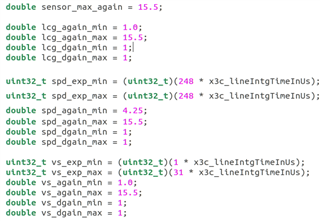hi, TI experts,
Recently, we found serious drag image in the road test, which is reflected in the effect below. On the left is our comparison image, and on the right is drag image problem. It seems that this problem is not the drag image problem caused by too long exposure time, and our maximum exposure time is 10ms. The real-time exposure time given by DCC is about 2000-3000us, but the picture still appears a relatively serious drag, may I ask how this happened? We suspect a fusion problem.




